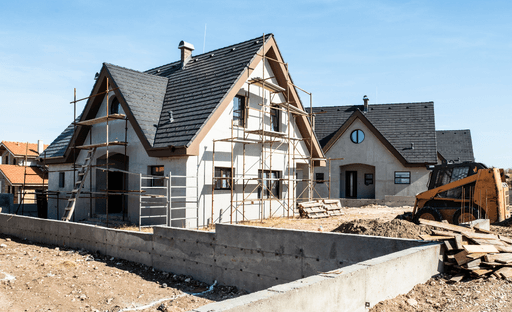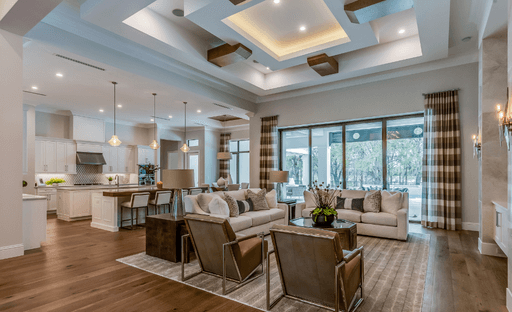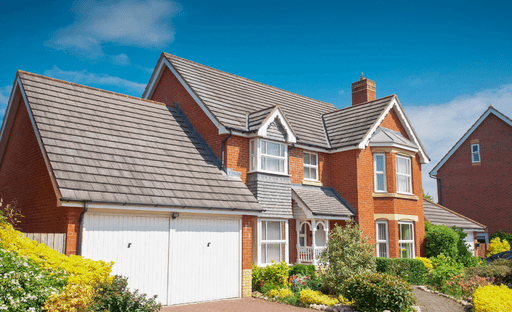Site built homes offsite construction advantages 2023
The construction industry is rapidly evolving, and offsite construction for site-built homes is becoming increasingly popular. Offsite building solutions offer a range of advantages that can be leveraged to maximise cost efficiency and unlock the potential of modular home design. In this blog article, we will explore the benefits of offsite construction for site-built homes while understanding the advantages of prefabricated building solutions. We will also discuss how to maximise cost efficiency with offsite construction and unlock the potential of modular home design. By reading this article, you’ll gain valuable insights into how you can benefit from these innovative methods in your own projects.
Offsite construction is becoming increasingly popular as the advantages of building homes offsite become more widely known. Site-built homes are traditionally constructed on location, which can be costly and time-consuming. By contrast, offsite construction offers a number of significant benefits that make it an attractive option for many homeowners.
One major advantage of offsite construction is cost savings. Offsite homebuilding eliminates the need for additional labour costs associated with traditional site-built homes since most of the work is completed in a factory setting by skilled professionals who specialise in this type of work. Additionally, because materials are purchased in bulk and stored at the factory until they’re needed, there’s no need to pay extra shipping fees or wait for materials to arrive on location before beginning work – both factors that can significantly reduce overall costs associated with traditional site-built houses.
Another benefit to offsite homebuilding is speed: due to its efficient production process and lack of weather delays or other unforeseen circumstances common with site-built projects, an entire house can often be constructed much faster than if it were built on location from scratch – sometimes up to 50% faster! This means less time spent waiting around while your dream house takes shape and more time enjoying your new home sooner rather than later!
In addition to saving money and reducing build times, another advantage offered by offsite construction is improved quality control; since all components are pre-fabricated in a controlled environment where every detail has been accounted for ahead of time (including exact measurements), there’s less room for error when assembling them together into one cohesive unit once they reach their destination – resulting in higher quality results compared with those achieved through traditional methods alone!
Finally, prefabricated housing also provides greater design flexibility; because most components have already been manufactured according to specific plans prior to being shipped out onto location sites (as opposed to having them custom-made after arriving) you have far more options available when deciding how you want your dream house look like without sacrificing any structural integrity along the way – making it easier than ever before creating unique living spaces tailored specifically towards individual tastes & needs!
All things considered, then it’s easy to see why so many people opt to go down the route of prefabricated housing these days – not only does offer numerous financial & logistical benefits but also allows unprecedented levels of customisation to boot making the perfect choice for anyone looking build their own unique abode without breaking bank doing so either!.
Exploring the Benefits of Offsite Construction for Site-Built Homes

Offsite construction is becoming increasingly popular in the home building industry as a way to reduce costs and improve efficiency. With offsite construction, homes are built in an off-site facility and then transported to the site where they will be installed. This method of building has many advantages over traditional site-built homes, including reduced labour costs, faster build times, improved quality control, and greater flexibility for customising designs. Planning Portal to help with resources.
One of the most significant benefits of offsite construction is that it can significantly reduce labour costs by eliminating some on-site tasks such as foundation work or framing. By using pre-fabricated components that have already been assembled at an off-site facility before being transported to the job site for installation, builders can save time and money while still ensuring high-quality results. Additionally, with fewer workers needed on site, there’s less risk of accidents or delays due to weather conditions or other unexpected issues which could lead to costly project overruns if left unchecked during traditional builds.
Another advantage is that because much of the work takes place away from the actual job location it allows for more efficient use of resources since materials don’t need to be moved back and forth between sites multiple times throughout a project’s duration as they would with a standard build process; this also helps keep material waste down which further reduces overall cost savings associated with this type of building technique.
Finally, one major benefit associated with prefabrication is its ability to provide greater flexibility when designing custom homes; because all components are made ahead of time in an assembly line fashion designers have more freedom when creating unique floor plans without having to worry about how each piece will fit together once delivered on location – something not possible when constructing traditionally built structures from scratch at ground level!
Understanding the Advantages of Prefabricated Building Solutions

Prefabricated building solutions offer a variety of advantages over traditional site-built construction. Prefabrication is the process of constructing components or entire structures offsite and then assembling them onsite. This approach has become increasingly popular in recent years due to its cost savings, speed of construction, improved quality control and environmental benefits.
One major advantage that prefabricated buildings have over site-built homes is their ability to be constructed quickly and efficiently with minimal disruption to the surrounding environment. By manufacturing components in a factory setting, builders can reduce labour costs while ensuring consistent quality throughout the project’s duration. Additionally, since most prefabricated buildings are designed for easy assembly on site, they require less time for installation than traditional methods do – resulting in faster completion times overall.
Another benefit associated with prefabrication is improved safety standards during construction compared to those found at typical job sites where workers may be exposed to hazardous conditions such as extreme temperatures or dangerous materials like asbestos fibres from older structures being demolished nearby. In addition, using precast concrete panels instead of poured concrete foundations during assembly processes helps reduce potential risks even further since there’s no need for workers to handle wet cement which can cause serious injuries if not handled properly.
Finally, when it comes down to sustainability issues related to building projects, prefabrication offers many advantages too: because all parts are made offsite under controlled conditions, there’s less waste generated than what would occur if everything was built on location; also, by reducing transportation needs between factories and job sites you get an additional reduction in emissions linked with fuel consumption; finally, since fewer resources are needed overall due its streamlined production process there’s also an economic incentive associated here too.
Overall these factors make prefabricated building solutions a great option for anyone looking into new home constructions or renovations who wants both high-quality results without breaking their budget or sacrificing safety standards along the way.
How to Maximise Cost Efficiency with Offsite Construction

Offsite construction is becoming increasingly popular in the building industry, and for good reason. It offers many advantages over traditional site-built homes, including cost efficiency. By taking advantage of offsite construction methods, you can maximise your cost savings while still creating a high-quality home that meets all of your needs.
One way to maximise cost efficiency with offsite construction is by using prefabricated components. Prefabricated components are made in a factory setting and then transported to the job site where they are assembled into the finished product on location.
This process eliminates much of the labour costs associated with traditional site-built homes since most of the work has already been done before it arrives at its destination. Additionally, because these components have been designed specifically for their intended purpose, they often require less time and effort to install than those used in conventional building techniques which can further reduce labour costs as well as material waste during installation processes.
Another way to increase cost efficiency with offsite construction is through modularisation or “modular” design principles which involve breaking down larger structures into smaller pieces that can be more easily managed during transport and assembly processes on location at a fraction of what would otherwise be required for full scale builds from scratch on site. Modular designs also allow builders to take advantage of economies of scale when ordering materials since multiple units may be ordered simultaneously resulting in lower per-unit pricing due to bulk discounts available from suppliers who specialise in this type of manufacturing process.
Finally, utilising advanced technologies such as 3D printing or CNC machining allows builders even greater control over production timelines, quality assurance protocols, and overall project costs by streamlining fabrication processes while maintaining precision and accuracy throughout each step along the way. These technologies provide an opportunity for architects, engineers, contractors, fabricators & other professionals involved within any given project scope an efficient means towards achieving desired outcomes without having to sacrifice quality standards or break budgets along their journey towards completion.
Overall there are numerous ways one could go about maximising cost efficiencies when working within an offsite constructions environment – whether it’s through prefabrication strategies or utilising modern technology solutions – but regardless of whichever route you choose always remember that planning ahead will help ensure success no matter how big or small your next build might end up being.
Constructed and Affordable Alternatives to Manufactured Homes
Site built homes offer a way to get the most out of your budget in terms of quality and design. With site-built homes, you can create custom designs that fit both your style and needs without sacrificing quality or breaking the bank.
Utilising prefabrication techniques for your offsite construction project can also be
Site built homes are a popular choice among those seeking to customize their living spaces. Homes built on-site offer more control over the design and layout, allowing for a truly custom build. These affordable homes are constructed from high-quality building materials and follow a strict project sequence, ensuring a durable and well-built home. With the proper consent from local authorities, site-built homes can be an excellent alternative to manufactured homes.
When considering affordable housing options, it is important to compare site built homes to other alternatives, such as manufactured or modular homes. While manufactured homes are often more affordable upfront, the long-term benefits of a site-built home may outweigh the initial cost difference. Additionally, site-built homes tend to have a higher resale value, making them a wise investment for future homeowners in the UK.
Affordable Homes Made Easy: Comparing Custom Site Built Homes with Manufactured Options for Your Dream Build Home
When looking to build a home, it is essential to weigh the pros and cons of different housing options. A reputable website or agent can help guide you through the decision-making process. While manufactured homes offer a quick and affordable solution, they may lack the customization and durability of site-built homes. On the other hand, built homes provide the opportunity for personalized design, higher quality building materials, and better long-term value.
However, it is essential to note that site-built homes require more time and effort to plan and execute, as compared to manufactured or modular homes. Ultimately, the choice between custom site built homes and manufactured homes comes down to your personal preferences, budget, and timeline for moving into your new home.
Unlocking the Potential of Modular Home Design
Modular home design is revolutionising the way we build homes. By unlocking the potential of modular construction, builders can create high-quality, energy-efficient homes in a fraction of the time and cost compared to traditional site-built construction.
Modular building offers numerous advantages over traditional methods, including faster completion times and lower costs due to reduced labour requirements. Additionally, modular buildings are often more structurally sound than their site-built counterparts since they are built in controlled factory environments with quality materials that meet or exceed industry standards. Furthermore, these structures can be designed for maximum energy efficiency by incorporating green building practices such as solar panels or other sustainable technologies into their designs. With all these benefits combined, it’s easy to see why modular home design is becoming increasingly popular among homeowners looking for an affordable yet stylish living space that meets their needs without compromising on quality or sustainability. National House Building Council

How much faster is offsite construction?
Offsite construction can be up to 50% faster than traditional onsite construction methods
What does offsite mean in construction?
Offsite construction refers to the process of manufacturing and pre-assembling building components or modules at a location away from the construction site, which is then transported to the site for final assembly.
Which is an advantage of building offsite?
An advantage of building offsite is that it allows for greater control over the construction process, resulting in increased quality, less waste, and reduced construction time.






